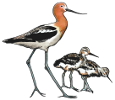Tour stop: Fish Gate
Function of the Fish Gate
The fish gate was built to prevent fish, mostly chinook salmon and steelhead trout that are threatened or endangered, from being trapped in the shallow salt pond. The salt pond cannot support fully grown salmonids because there is not enough oxygen in the shallow water that modulates with the tide. However, you can often see birds by the fish gate waiting to capture any small fish that manage to make it through the gate, such as this great egret. To reduce entrapment, the fish gate is closed during the outmigration season of juvenile steelhead.
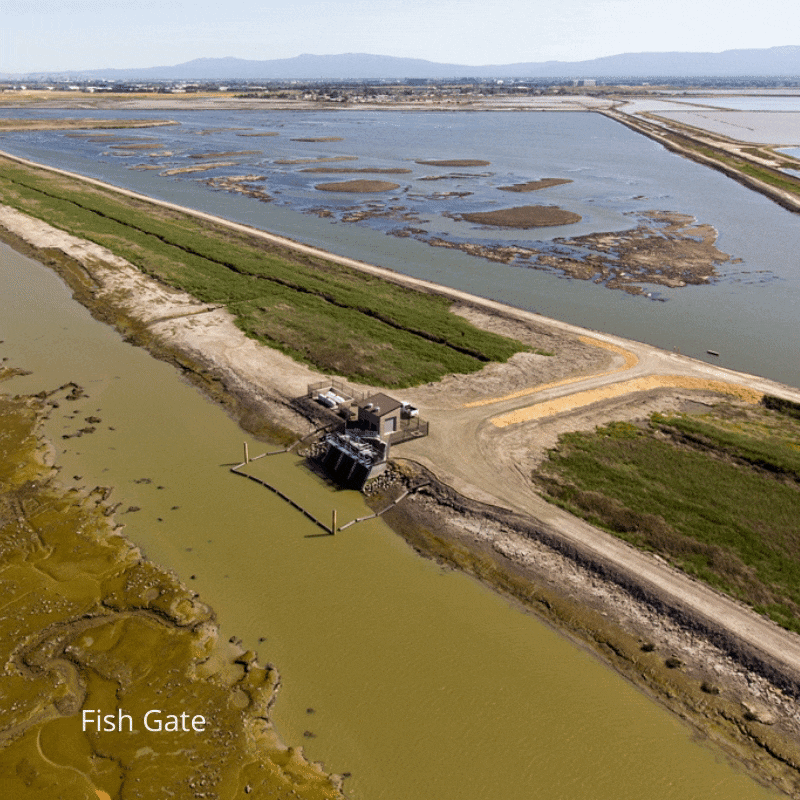
Salt Pond Restoration
The Don Edwards National Wildlife Refuge is involved with the largest tidal wetland restoration on the West Coast called the South Bay Salt Pond Restoration Project. This project will convert 15,100 acres of former industrial salt ponds to a mix of tidal marsh, mudflat, managed pond, open water, and other wetland habitats. Restoration of the salt ponds requires recovery of the tidal flow by removing the mud walls or levees that impede the entrance of water to the ponds. Through time, weed management and native plant propagation through the San Francisco Bay Bird Observatory nursery with over 2600 native Bay Area plants must be done in order to generate a vegetation structure within the salt marsh. Plants include Alkali heath (Frankenia salina), Pacific aster (Symphyotrichum chilense), and Salt marsh baccharis (Baccharis glutinosa).
These salt marshes have organisms adapted to the salinity and floods of this type of ecosystem. One is pickleweed (Salicornia pacifica), a halophytic and succulent native plant that dominates the lower marsh. Pickleweed gives habitat and resources to several residents of the marsh, including the endangered Salt Marsh Harvest Mouse (Reithrodontomys raviventris). Because pickleweed is a halophyte, it tolerates high concentrations of salt, which is filtered out through the roots. Unlike many other plants, pickleweed can store excess salt in the vacuoles (storage organelles) of the cells at the tips of the plant. This gives the pickleweed a salty taste!
https://www.southbayrestoration.org/
https://youtu.be/YpRSy4UQ0QM
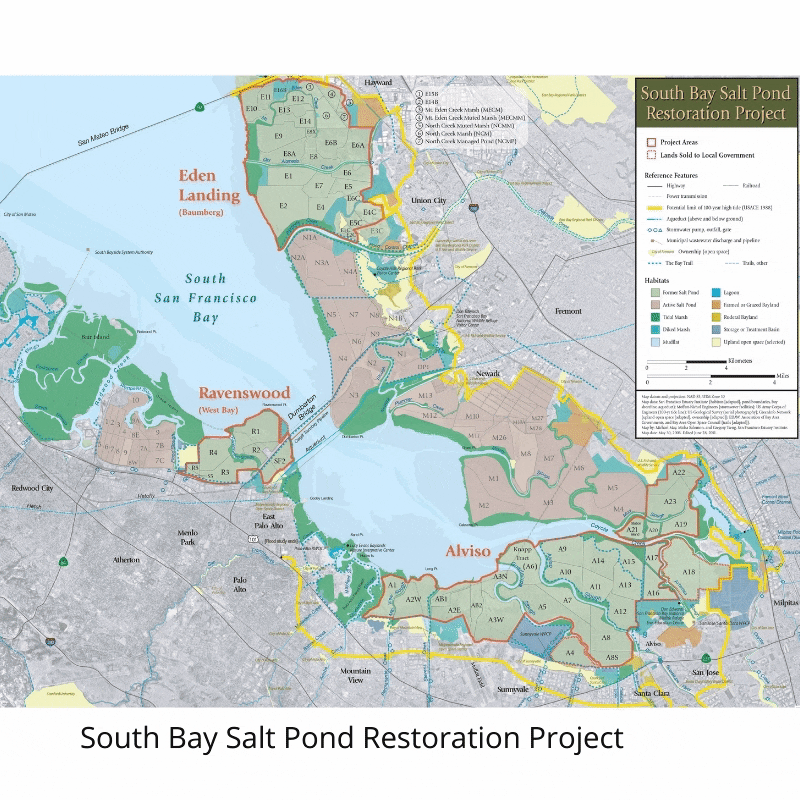
Mudflat Habitat
Tidal mudflats are intertidal areas covered twice a day by the Bay's high tides and are exposed during low tides. Mudflats support an abundance of life with an estimated 40,000 organisms living in two handfuls of mud - most of the organisms are microscopic. Examples of life in the mudflats include shellfish, snails and other invertebrates, as well as algae and eelgrass. Shore birds visit the mudflats to eat the larger and more visible creatures that live there such as snails, mussels, worms, and clams.
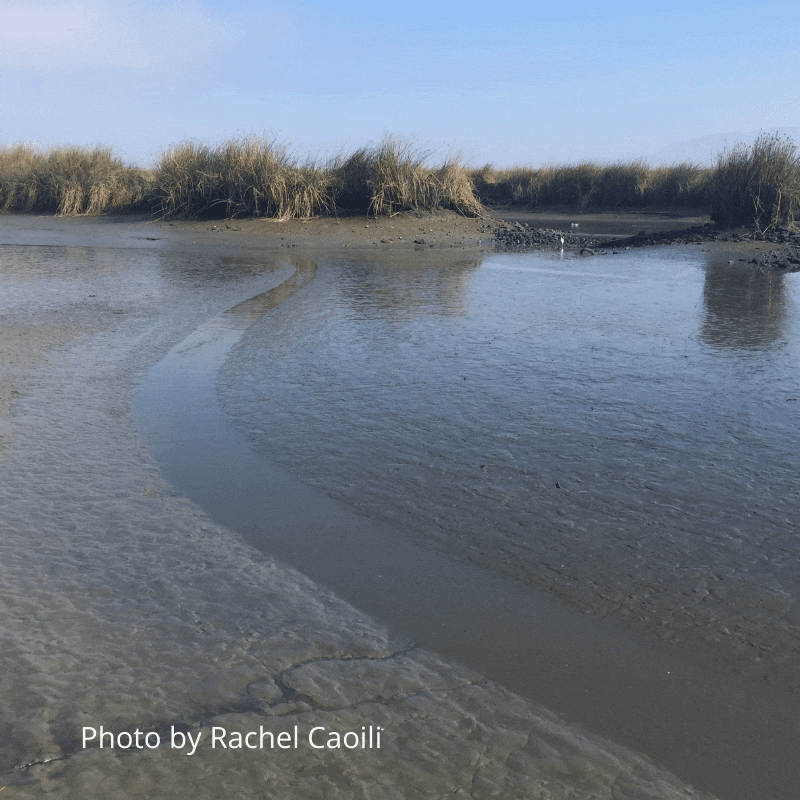
Fish in the South Bay
Looking into this gray, murky water you may wonder - are there any fish in there?! The answer is YES! There are! Scientists have found many species of fish throughout the lower reaches of the South Bay. Topsmelt, three-spined sticklebacks, long-jawed mudsuckers, northern anchovies, and bat rays! Various species of shrimp abound in the Bay and sloughs. Occasionally, when the salinity of the water is high comb jelly's follow the tides and drift into the South Bay. Additionally, eleven species of sharks can be found in the San Francisco Bay. The most common is the Leopard Shark. The sharks feed on crustaceans, mollusks, and small fish found on the bottom of the bay. The Bay's water ebb and flow, the fish, shrimp and sharks come and go on the tides. Look closely, you may see a shadowy figure under the depths or better yet, watch the birds, and the seals as they catch their prey. You never know what species they may find!
https://www.sfbaymsi.org/post/when-it-s-summer-get-ready-for-chondrichth...
https://i2.wp.com/hobbslab.com/wp-content/uploads/2019/11/8-sturgeon.png...
http://hobbslab.com/2019/10/06/fish-in-the-bay-october-2019-uc-davis-tra...
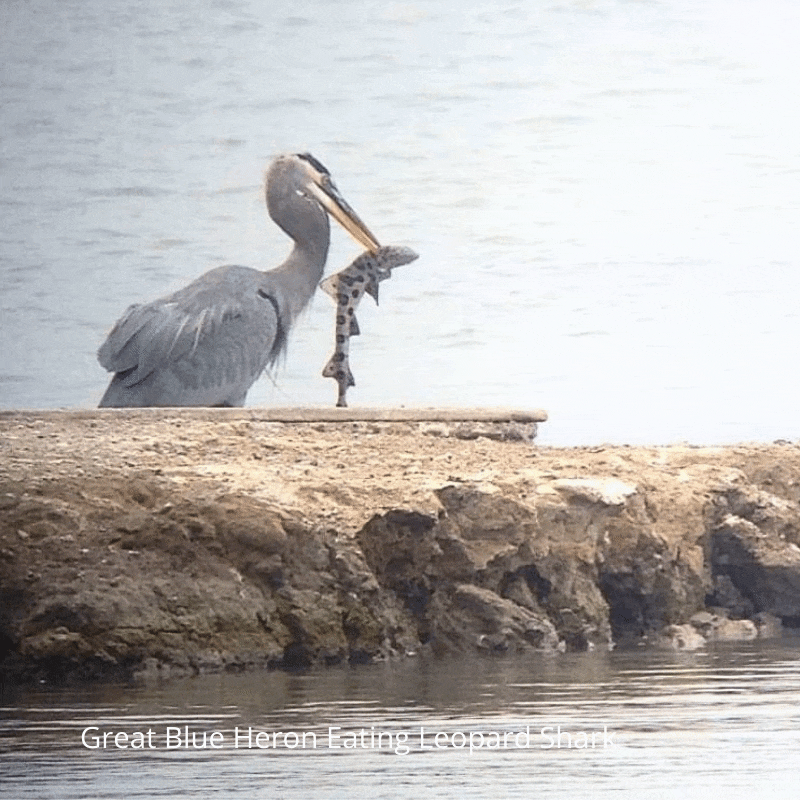
Back to homepage: https://sfbayws.org/refuge-tour
